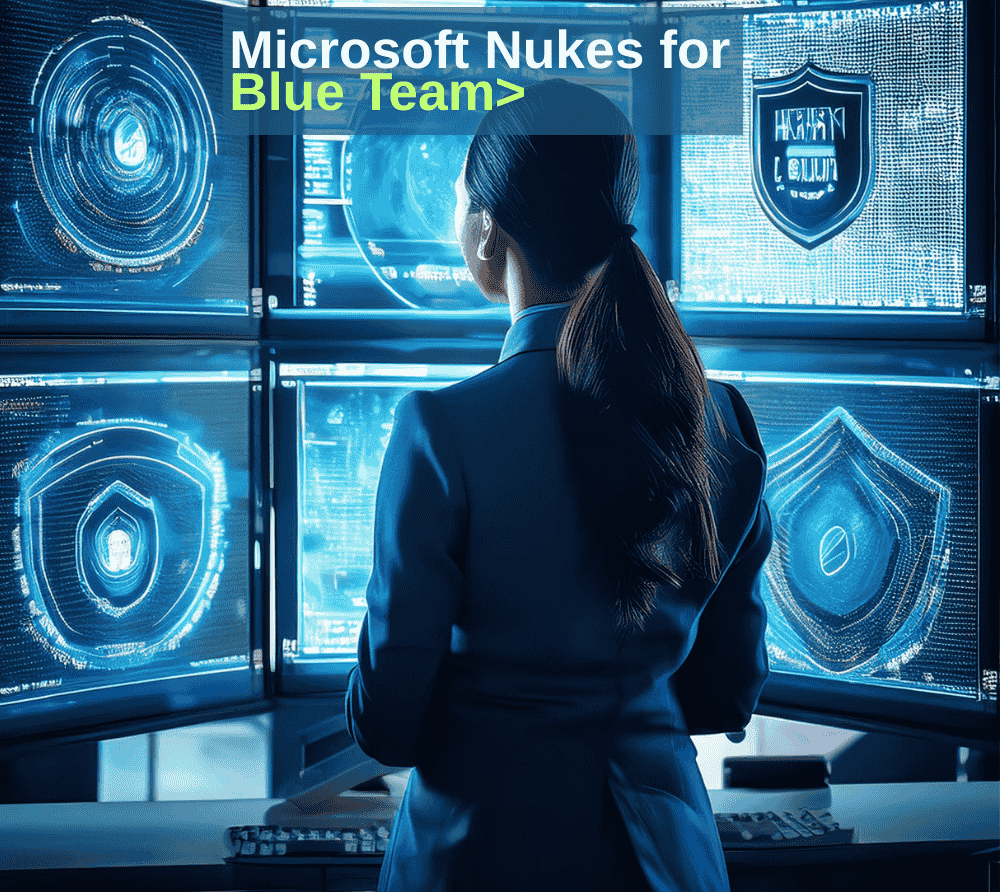Microsoft’s Tactical Advantage for Blue Teams: Leveraging Advanced Windows Security Features for Incident Response and Threat Hunting
There is now an increased pressure on defenders, or “blue teams,” to respond to threats with speed and accuracy. Today we will deep dive into the suite of powerful, underutilized tools that Microsoft has made available to blue teams. These tools enable defenders to detect, analyze, and respond to attacks in ways that were previously challenging, if not impossible.
Microsoft Tools for Blue Teamers
Sysmon (System Monitor)
Sysmon is a part of the Sysinternals Suite and provides detailed event logs, capturing granular data on process creation, network connections, file modifications, and more. Sysmon can be configured to log suspicious behavior and uncover anomalies that typical event logs might miss.
Practical Application:
Sysmon enables defenders to detect advanced techniques such as process injection or fileless malware attacks by logging process activities in detail. By setting up Sysmon to monitor specific indicators of compromise (IOCs), blue teams can respond quickly to suspicious activity.
Windows Event Forwarding (WEF)
Windows Event Forwarding is a built-in feature for aggregating logs from multiple systems to a central collector. This allows blue teams to monitor logs across an entire network in real time, making it easier to correlate events and detect lateral movement.
Practical Application:
WEF is essential for large environments with numerous endpoints. By centralizing event logs, blue teams can gain a comprehensive view of the environment, quickly identifying patterns that might indicate compromise, such as simultaneous logins from different locations.
PowerShell Logging and Script Block Logging
PowerShell is often used by attackers due to its flexibility and access to system-level functions. However, Windows provides powerful logging options for PowerShell that blue teams can leverage to track malicious scripts and command execution in real-time.
Practical Application:
With Script Block Logging, defenders can monitor every PowerShell command executed on a system, identifying suspicious scripts or commands used by attackers for reconnaissance or exploitation. PowerShell logs can reveal indicators of attacks, such as encoded payloads, network connections, or privilege escalation attempts.
Attack Surface Reduction (ASR) Rules
Part of Microsoft Defender ATP, ASR rules restrict certain behaviors commonly used by malware, such as executable content in Office files or macros that could download and execute code. By applying these rules, blue teams can minimize the attack surface and block common entry points for attacks.
Practical Application:
ASR rules are particularly effective in stopping phishing attacks that rely on macros to install malware. By configuring ASR rules to block executable content in Office files, blue teams can protect against many initial infection vectors.
Enhanced Mitigation Experience Toolkit (EMET)
Though now integrated into Windows Defender Exploit Guard, EMET introduced a suite of protections that add security layers to applications, making exploitation more difficult. These protections, like Data Execution Prevention (DEP) and Address Space Layout Randomization (ASLR), are key in mitigating memory-based attacks.
Practical Application:
By enabling ASLR, DEP, and other mitigations, blue teams can prevent exploitation of memory-based vulnerabilities. This is especially useful for protecting legacy applications that may not have been designed with modern security in mind.
Using These Tools Together for Effective Incident Response
Each of these tools provides unique insights into different stages of an attack. When used together, they offer a comprehensive defense against even the most sophisticated threats. Below are strategies for combining these tools to enhance threat detection, response, and threat hunting:
- Centralized Logging and Real-Time Analysis: Combining Sysmon and Windows Event Forwarding creates a powerful centralized logging infrastructure. Sysmon captures detailed event logs, which can then be forwarded through WEF to a central server for real-time analysis. This setup enables blue teams to detect unusual patterns, such as processes spawning network connections or suspicious file modifications.
- Leveraging PowerShell Logging for Forensic Analysis: Since PowerShell is often used in post-exploitation activities, Script Block Logging provides a detailed record of all commands run through PowerShell, allowing defenders to track attackers’ actions. By correlating PowerShell logs with Sysmon events, blue teams can pinpoint suspicious activities and trace the attacker’s steps.
- Reducing Attack Surface with ASR Rules and EMET Protections: ASR rules and EMET (now part of Windows Defender Exploit Guard) provide proactive protection by blocking common attack vectors, such as macros or memory exploits. By configuring these features, defenders can prevent certain attacks from executing in the first place, reducing the likelihood of an incident.
- Threat Hunting with Sysmon and WEF: Advanced threat hunting often involves identifying subtle signs of compromise across an environment. By combining Sysmon’s detailed logging with WEF’s centralized event collection, blue teams can hunt for advanced threats, such as lateral movement or privilege escalation, by searching for suspicious process chains, unexpected command executions, and anomalies in user behavior.
Lessons from Past Incidents
The advanced tools and features that Microsoft provides have already proven effective in real-world incidents. For example, in the NotPetya attack, centralized logging and ASR rules could have prevented lateral movement and contained the spread of ransomware. By using Microsoft’s advanced security tools effectively, blue teams can prevent similar attacks, detect intrusions earlier, and mitigate the impact of breaches.
Recommendations for Blue Teams
- Implement and Configure Sysmon Logging: Ensure that Sysmon is deployed on all endpoints with custom configurations to capture high-value events, such as process creation and network connections, for better visibility into system activities.
- Leverage WEF for Scalable Log Collection: Use Windows Event Forwarding to centralize log collection across the network. This will enable defenders to analyze logs at scale and correlate events for improved threat detection.
- Enable PowerShell Logging: Configure PowerShell Script Block Logging to monitor every command executed. This provides visibility into malicious script execution and helps track post-exploitation activities.
- Deploy ASR Rules and Exploit Mitigations: Configure ASR rules to block common attack techniques and apply exploit mitigation features like DEP and ASLR to protect against memory-based exploits.
Final Thoughts
Microsoft’s security features, offer blue teams a powerful toolkit for defending against advanced adversaries. By combining tools like Sysmon, PowerShell logging, and ASR rules, defenders can significantly enhance their ability to detect and respond to attacks.
At Terraeagle, we work with organizations to fully leverage these powerful tools for incident response, threat hunting, and overall security enhancement. Contact us to learn how we can help your blue team stay a step ahead of attackers.



